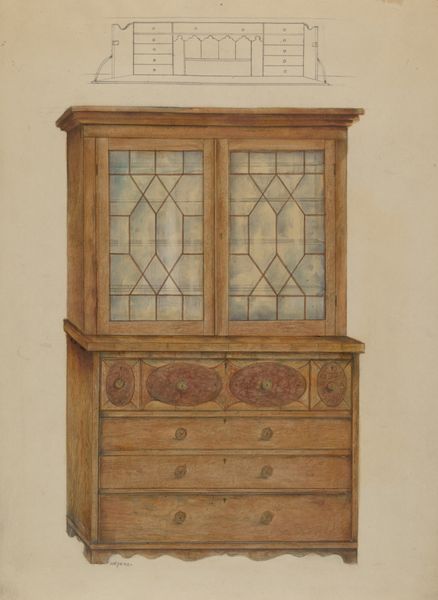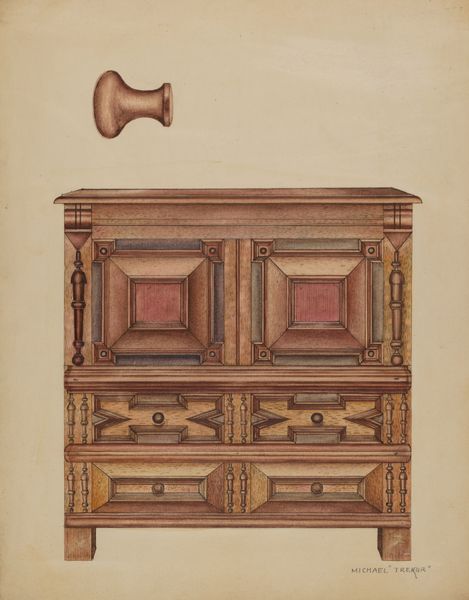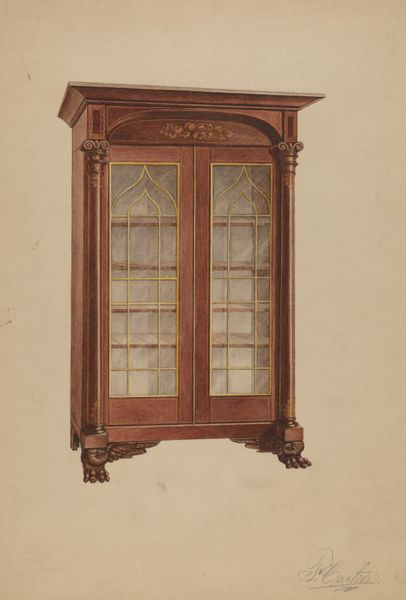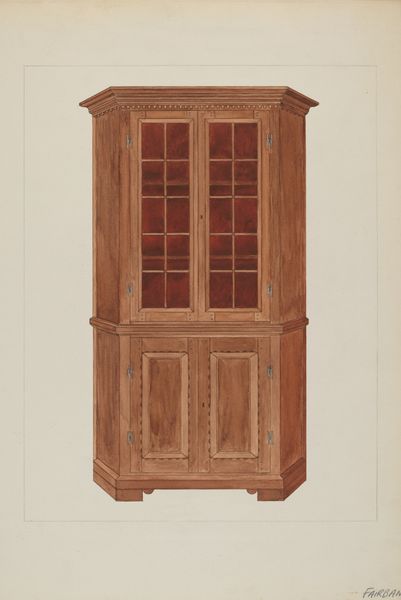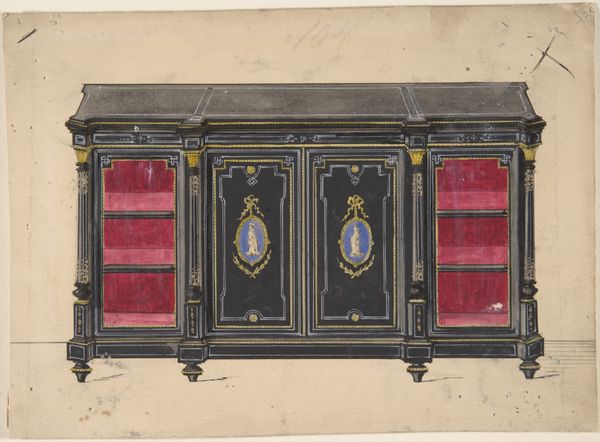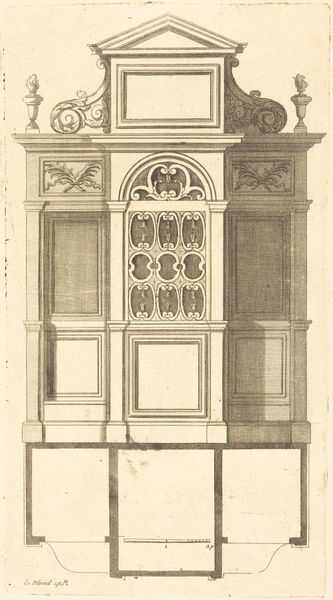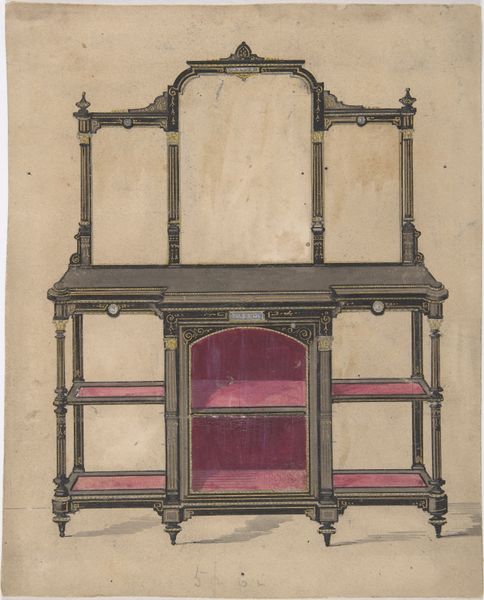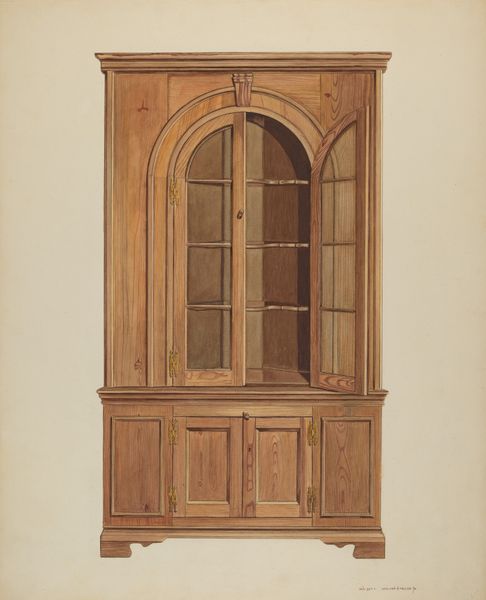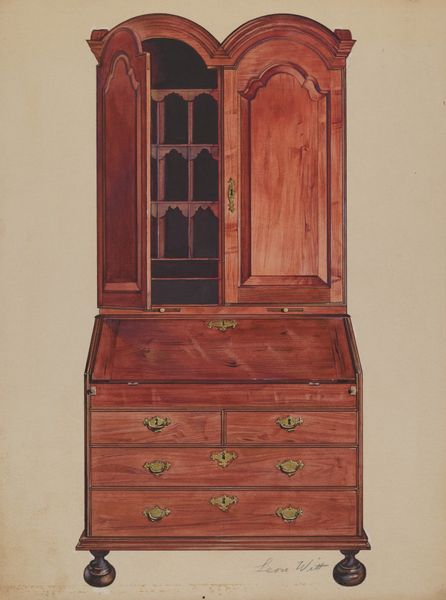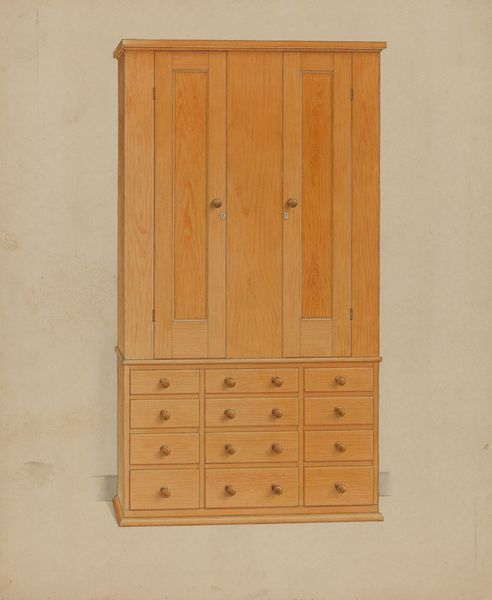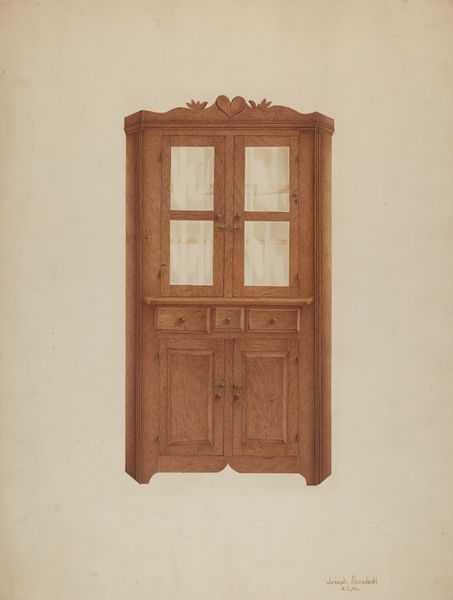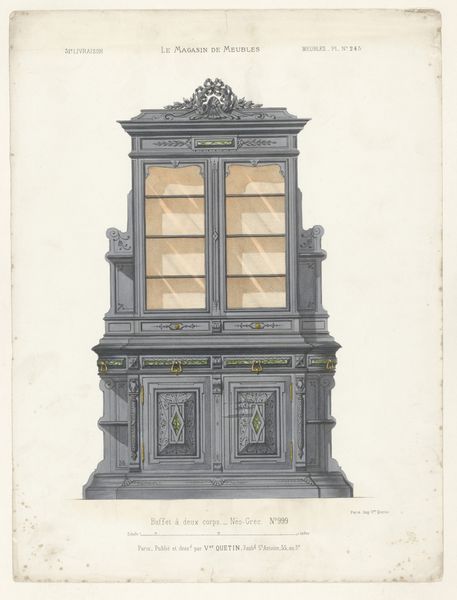
drawing, painting, watercolor
#
drawing
#
painting
#
watercolor
#
folk-art
#
genre-painting
#
decorative-art
#
watercolor
Dimensions: overall: 42.8 x 29.7 cm (16 7/8 x 11 11/16 in.) Original IAD Object: 79" high; 53 1/2" wide; 20 3/4" deep
Copyright: National Gallery of Art: CC0 1.0
Curator: Here we have Carl Strehlau’s “Painted Cabinet,” a watercolor drawing from around 1939. Editor: The initial feeling is charmingly naive. There's a sweetness in the colour choices—the reds, blues and touches of pale yellow. The perspective feels a little off, which gives it a flattened, almost dreamlike quality. Curator: Strehlau worked extensively for the Index of American Design, a WPA program which documented American decorative arts. Many European-trained artists, struggling to adapt to the economic hardships in America, contributed to this effort by making detailed drawings of surviving American antiques and handicrafts. Editor: I see. The drawing becomes more poignant when considered as part of the WPA initiative. What seems like folk art is in fact decorative art depicted in this two-dimensional drawing using watercolor techniques. Did you also notice the details on the surface? There is an interesting linear pattern! Curator: Yes, the drawing is quite evocative! In this context, these pieces documented a sense of continuity through times of profound disruption, reassuring communities about cultural cohesion through material culture. I imagine Strehlau saw himself as preserving an authentic record of craft at a time when American identity was being actively reshaped through propaganda and cultural policy. Editor: It is fascinating to look closely at how he depicts the painted surface—there is this deliberate faux grain, isn't it? Also these little angels on the lower doors of the cabinet feel like a comforting presence. Curator: Absolutely. I agree the texture and the symbolic weight that this type of furniture, with its hand-painted details and folksy motifs, held during that period—when simple luxuries spoke to American resourcefulness, inventiveness, and an ability to thrive during periods of economic depression. Editor: This discussion makes me reconsider my first impression—now I also realize that the slightly melancholic mood could actually represent the spirit of its time. Curator: Precisely. It is this collision of decorative and painterly modes with a charged social context which makes this artwork such a significant cultural artifact.
Comments
No comments
Be the first to comment and join the conversation on the ultimate creative platform.

